COVID-19 and the interspecies frontier
How our long history with pangolins reveals the preconditions of both the pandemic and environmental crisis.
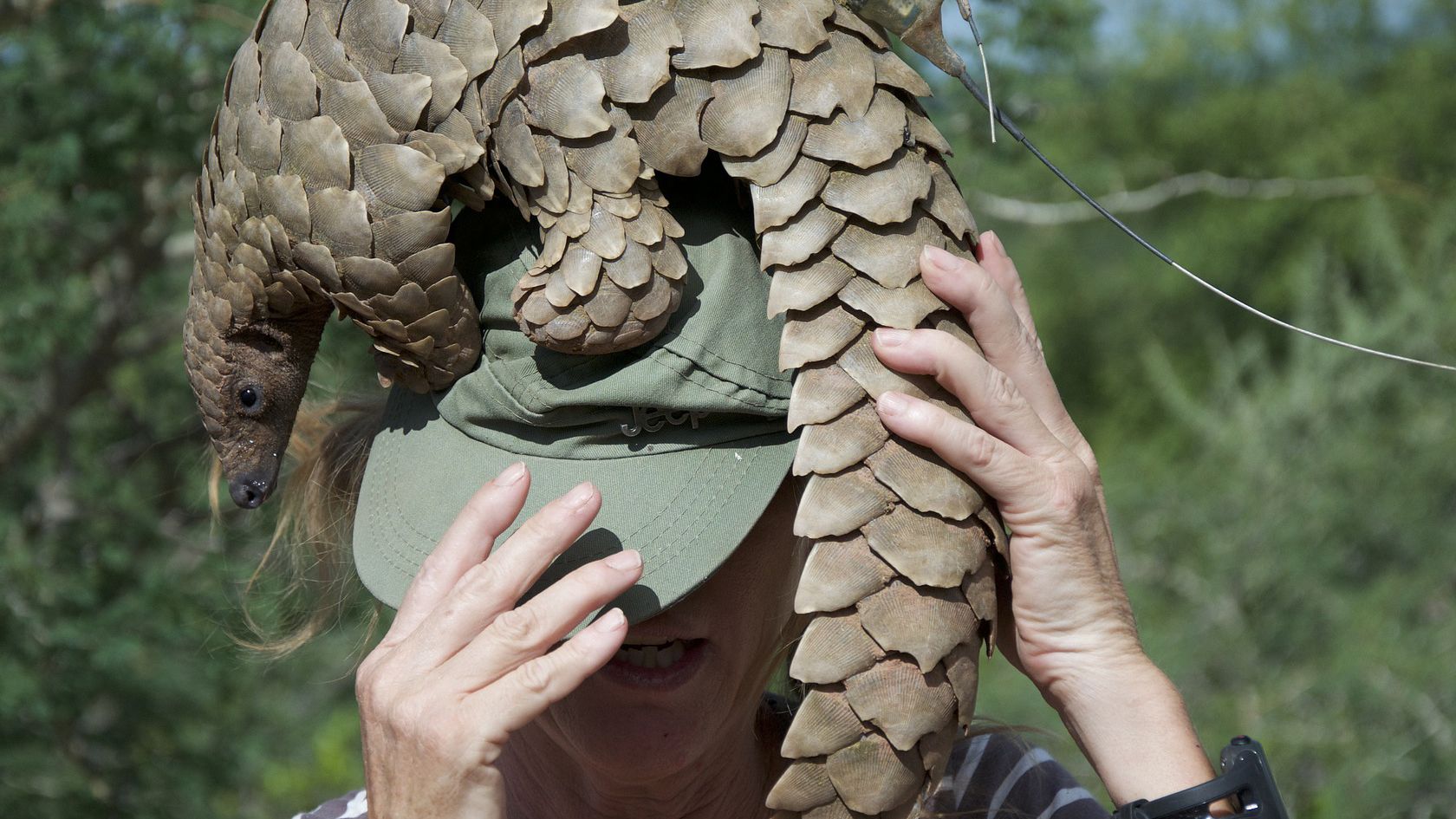
This is an abridged and simplified version of Sujit Sivasundaram’s ‘Viewpoint’ article in Past & Present, one of the world’s leading journals of historical research

The origins of the COVID-19 pandemic go far beyond China and much further back than 2019. The long history of the current crisis lies in human interactions with animals, not least pangolins, in a variety of settings, including in Europe. This global, increasingly capitalised and geographically-evolving story is one historical context that has allowed the virus to jump across the species barrier.
Zoonotic transfer occurs where relations between humans and animals have been unstable or where they are entering a new phase of contact. Such transfer is linked with the climate emergency because life on the planet is being radically changed by accelerating extinctions caused partly by humans entering biodiverse areas and using land in new ways. This is altering the interspecies frontier.
During the COVID-19 pandemic, historians have been asked to provide lessons from past epidemics to provide solace and cultural nourishment. The role of the historian is as critical as ever, but it does not lie primarily in ‘compare and contrast’ exercises. It is necessary to track the environmental past of the virus; it is urgent to understand the relationship between the planet’s illness and human illness. Such a history might include the intensifying structures of colonisation, capitalism and settlement as they impact interspecies relations.
Historians may also respond to the inequalities brought to light by the pandemic, by challenging the racialisation of differing human engagements with nature and animals. There is a global history of animal-human engagement that needs to be written in the light of COVID-19. This global history has set the preconditions for the pandemic and is revealing of the pathway to environmental crisis.
The most trafficked mammal
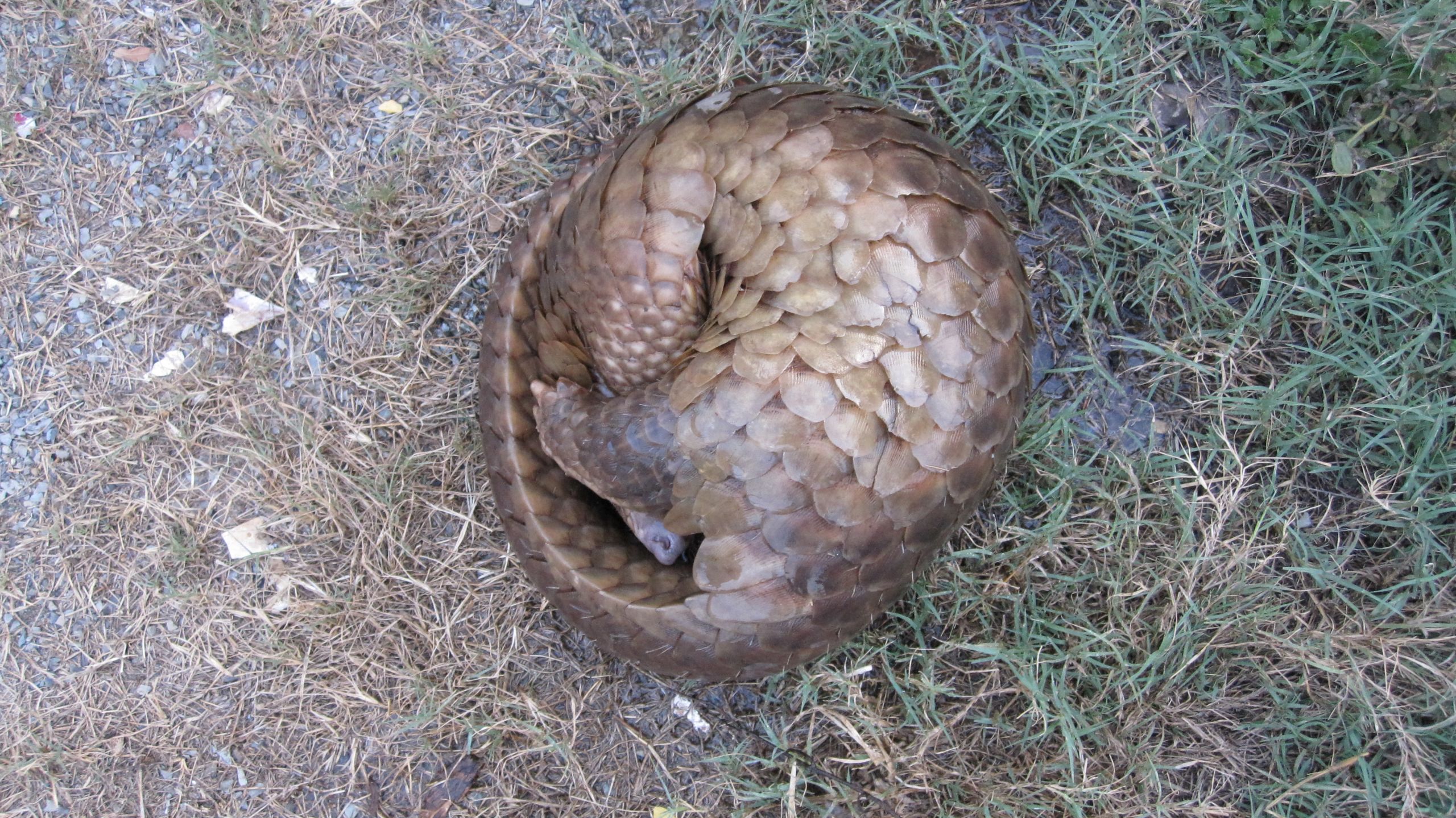
The trafficking of pangolins has grown exponentially in the last decade, so much so that the Western press has labelled it ‘the most trafficked mammal.’
In China, ground-up scales are used in traditional medicine, although the country recently announced that it will be moving to de-list them as an approved official ingredient. Fresh blood or foetuses are considered an aphrodisiac and eating tongue and other body parts can convey social status and a cultured appreciation of wildness.
A pangolin being rescued in 2010. Image courtesy of Wildlife Alliance via Flikr under a CC licence
A pangolin being rescued in 2010. Image courtesy of Wildlife Alliance via Flikr under a CC licence
Even over the last decade, the trade has been transformed as pangolin populations have declined in some Asian regions. Between 2000 and 2008, as Daniel Challender and others document, the trade was heavily weighted towards Asian pangolins from Southeast Asia moving to China and Vietnam. But in more recent years other Asian states have been involved and African pangolins have more fully entered the international trafficking network.
What is a Pangolin?
Classificatory problems
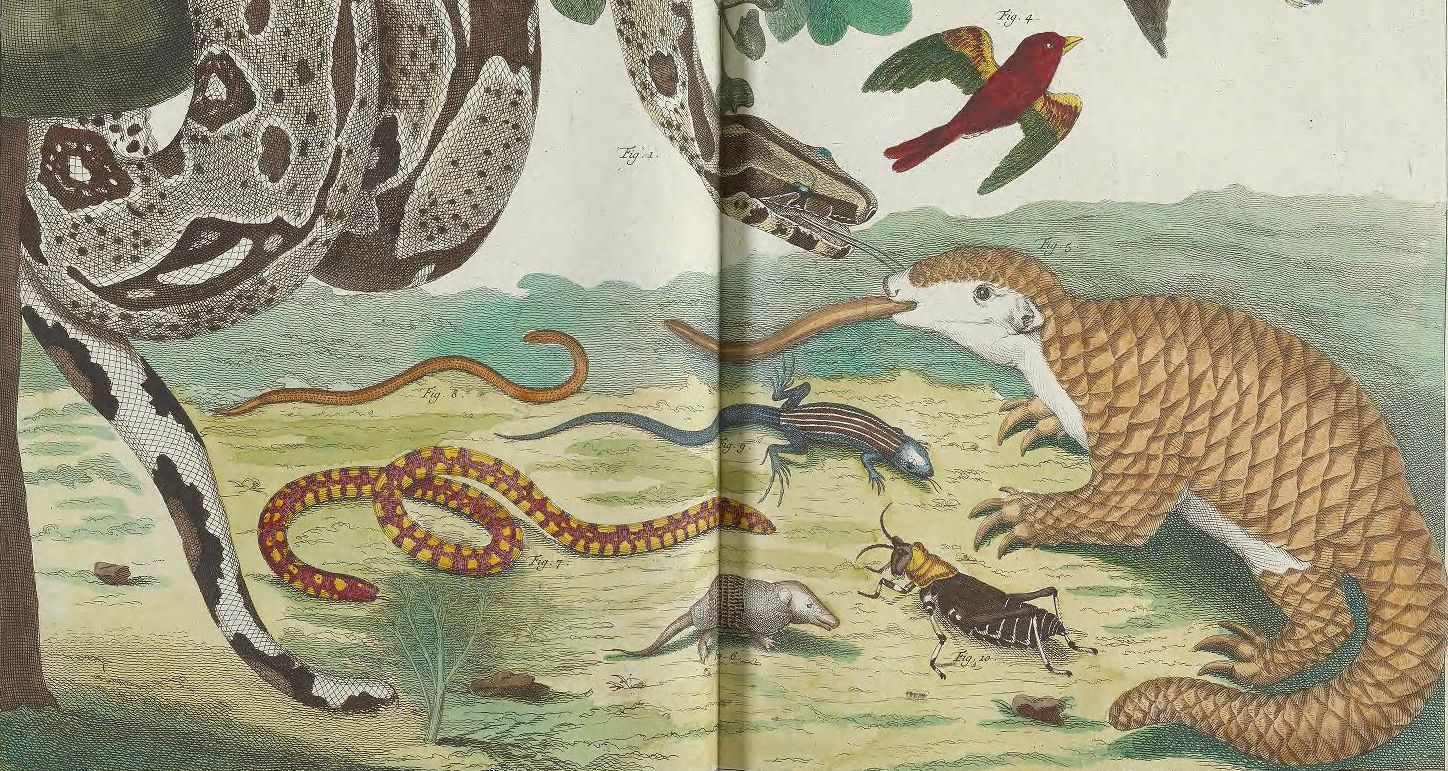
Scientists across the globe are trying to determine how COVID-19 arose. Samples taken from patients with COVID-19 have demonstrated that over 96% of the virus’ genome is shared with a coronavirus from horseshoe bats. Pangolins were proposed – firstly by scientists from South China Agricultural University in Guangzhou – as the intermediate host. However, the most recent research suggests that COVID-19 originated from a genetic recombination of a pangolin virus with a bat virus.
Given such recombinations, it is difficult to isolate the mechanisms of origin. It is also difficult to isolate the viruses carried by different groups of pangolins. One important paper for instance, which disputed the involvement of pangolins, ends with this qualification: ‘due to the limited viral metagenomic data obtained from pangolins, we cannot exclude that other pangolins from China may contain coronaviruses that exhibit greater similarity to the SARS-Co-V-2 virus.’
The pangolin is a creature which has consistently generated classificatory confusion. Naturalists have puzzled over whether to place pangolins next to other ant-eating mammals (such as armadillos, sloths, anteaters and aardvarks) or instead alongside carnivorans. Pangolins now comprise a mammalian order named Pholidota, with three genera, Manis, Phataginus and Smutsia. Eight different species are found in subtropical Asia and sub-Saharan Africa.
The samples used by the scientists, in the paper just cited, were described as ‘Malayan’ and ‘Manis Javanica.’ But the scientists’ qualification raises the query of whether the result may have been different if they had compared their samples with coronavirus in pangolins ‘from China.’
After samples arrived in Europe for the first time in the late-seventeenth century, a pangolin skin was a prized element of a naturalist’s ‘cabinet of curiosity.’ As Natalie Lawrence has shown, from the very first accounts penned by Europeans of sightings of pangolins in Asia there was a confusion about how to characterise the creature.
The Dutch merchant Jan Huyghen van Linschoten (1563-1611), described the pangolin as:
‘A fish of most wonderfull and strange forme’ which has been recovered from ‘the River of Goa’ covered in ‘scales a thumbs breadth, harder than Iron or Steel.’
In addition to the taxonomic quandary about where the pangolin fitted, there was confusion over the identification of the creature’s parts. Assembling a pangolin from various detached skins in poor conditions of preservation further complicated processes of naming and classification.
Early naturalists consistently confused armadillos and pangolins. This led to an intervention by eighteenth-century French naturalist Georges-Louis Leclerc, Comte de Buffon (1707–88). Buffon sought to lodge armadillos and pangolins in separate geographical blocs: the first belonged to the New World and the second to the Old World.
‘No I don’t want a pangolin’
Orientalism and the Natural Order
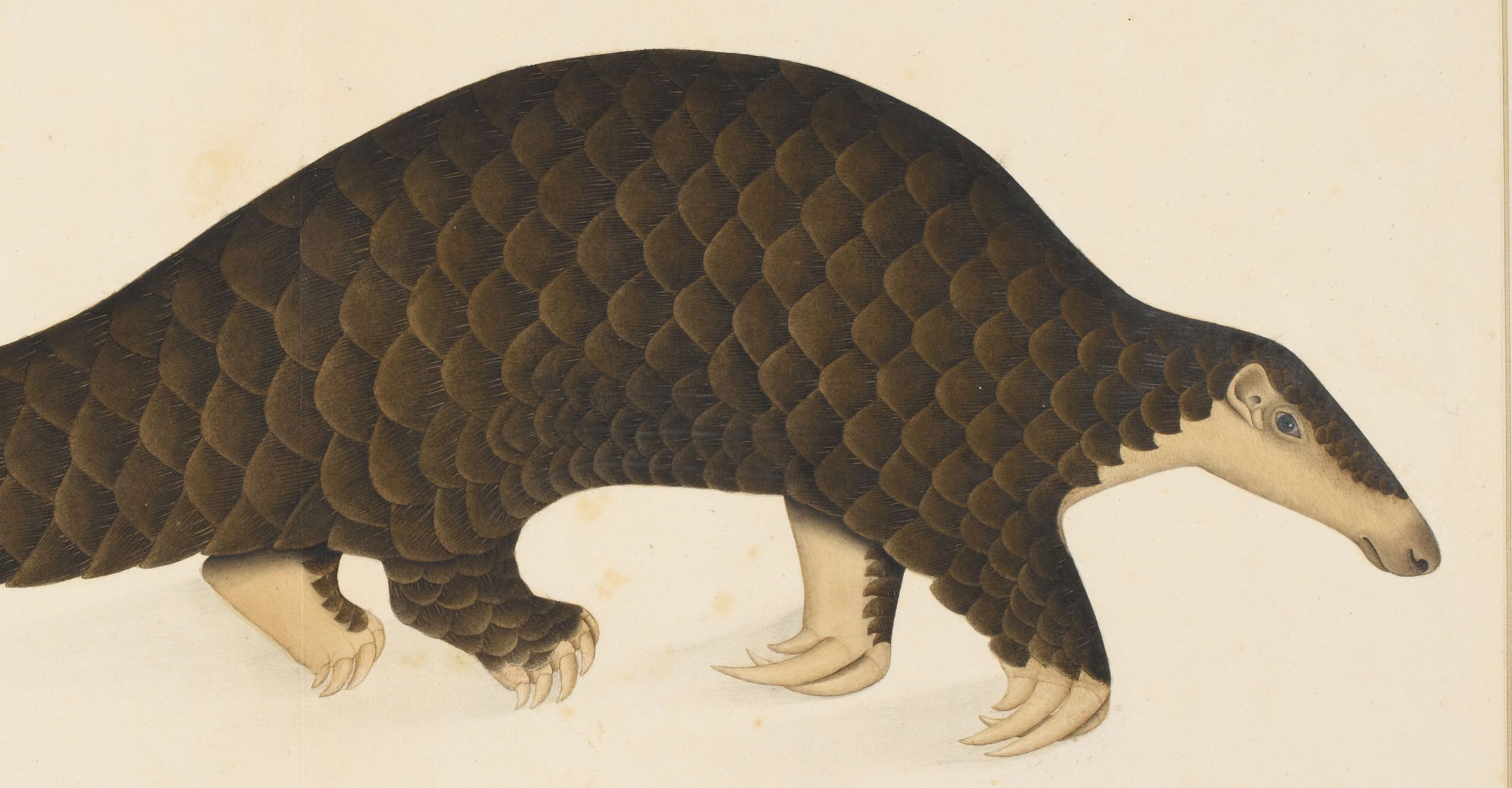
European colonial natural history separated out humans and nature very rigidly. Nature was turned into a resource within a capitalist system and the plunder of this resource generated persistent structures of inequality. The colonial archive from South Asia may be deconstructed to recover the unstable, evolving and intense intersection of humans and pangolins from the eighteenth to the twentieth centuries.
A very good entry-point to the late-eighteenth-century moment when Britons sought to orientalise India, is Patna artist Shaikh Zain ud-Din’s gouache on paper representation, ‘Lady Impey’s Pangolin’ (1779). Lady Impey, the wife of Calcutta’s chief justice, kept a large collection of creatures including a fruit bat, a dwarf flying squirrel, a ‘mountain rat’ and a pangolin.
What is striking about the image is the lack of any context and even a lack of curiosity demonstrated either by the artist or the pangolin. There are other images of pangolins which are similar to ‘Lady Impey’s Pangolin’ (which is shown above). This image is almost like a stock depiction of the pangolin in this period.
The lack of engagement between the pangolin and the human in ‘Lady Imepy’s Pangolin’ is in keeping with the nature of orientalist knowledge in this era. For instance, important orientalist, philologist and judge William Jones responded to the receipt of a pangolin as a gift: ‘I solicited his restoration to his beloved rocks, because I found it impossible to preserve him in comfort at a distance from them’.
Jones preferred to immerse himself in ‘oriental’ texts about animals. More broadly, the pangolin was problematic for those in search of divine design: what was it for and why did it look like it did?
‘It attacked my bathroom’
Colonial Settlement and the Pangolin
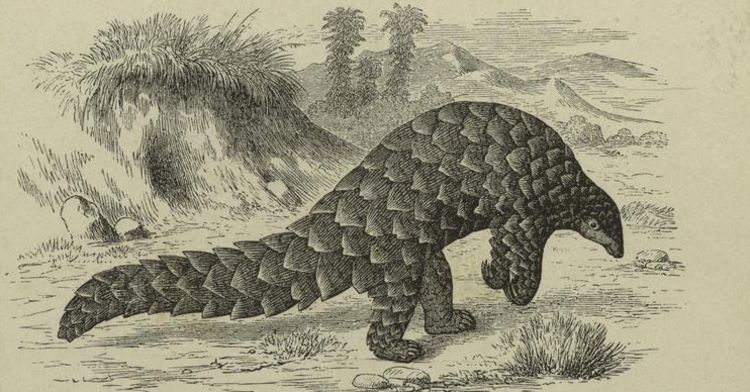
The late nineteenth century colonial archive also demonstrates the constraints that pangolins placed on humans who sought to know or tame them as imperialism and encroachment into biodiverse areas accelerated in Asia.
Colonial natural historians often complained of the difficulty of getting hold of pangolin specimens, given the creature’s nocturnal habits. Their hunt for skins gave way to a race to rear pangolins and keep them in captivity. In late colonial India, the forester and wildlife photographer, F. W. Champion, author of The Jungle in Sunlight and Shadow (1934), complained:
‘The pangolin is an exceedingly difficult animal to study in the wild, for he spends most of his life underground and very rarely appears above the surface in the daytime.’
And when Champion did manage to take pangolins captive, he found that they exercised their power against the conditions of their enclosure. Domesticity came under attack:
‘One specimen placed for comfort in the bathroom of my stone-built bungalow, the floor of which was plastered with what passes for cement in India. Within an hour he had dug up the floor in several places, and finally, choosing a spot near the wall, he had removed several stones weighing ten pounds or more each.’
Champion’s narrative, when placed within a much wider set of accounts like this, points to human attempts to control pangolins but also to animal responses to human colonisers.
‘Get to Sleep Little One’
Indigenous Perspectives on Nature
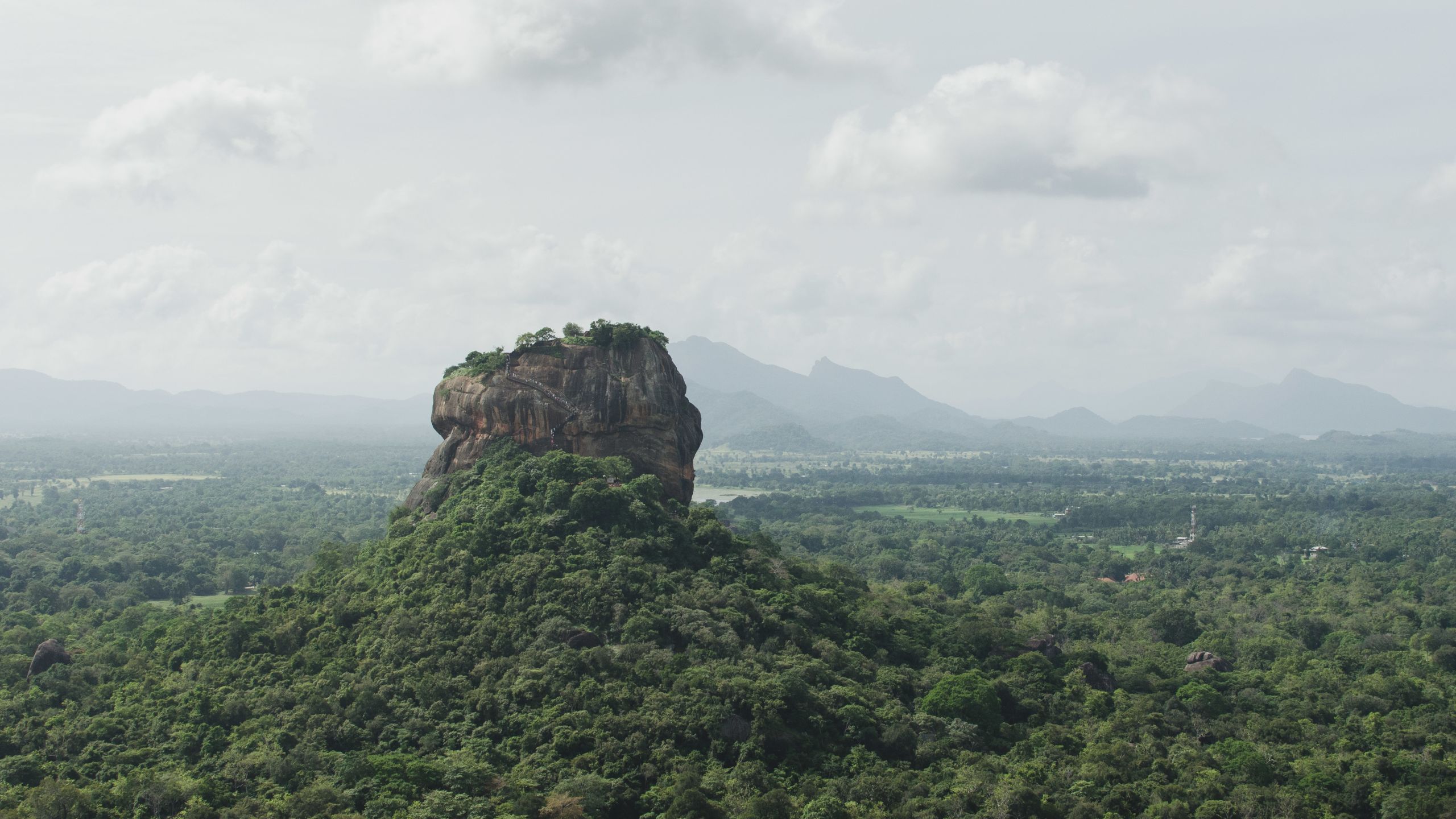
Asian indigenous peoples have, of course, viewed pangolins from a totally different cultural perspective. It is important to recall this knowledge here as indigenous peoples are at the frontier of the climate crisis; their knowledge systems also operate outside the colonial and capitalist modes of engaging with nature.
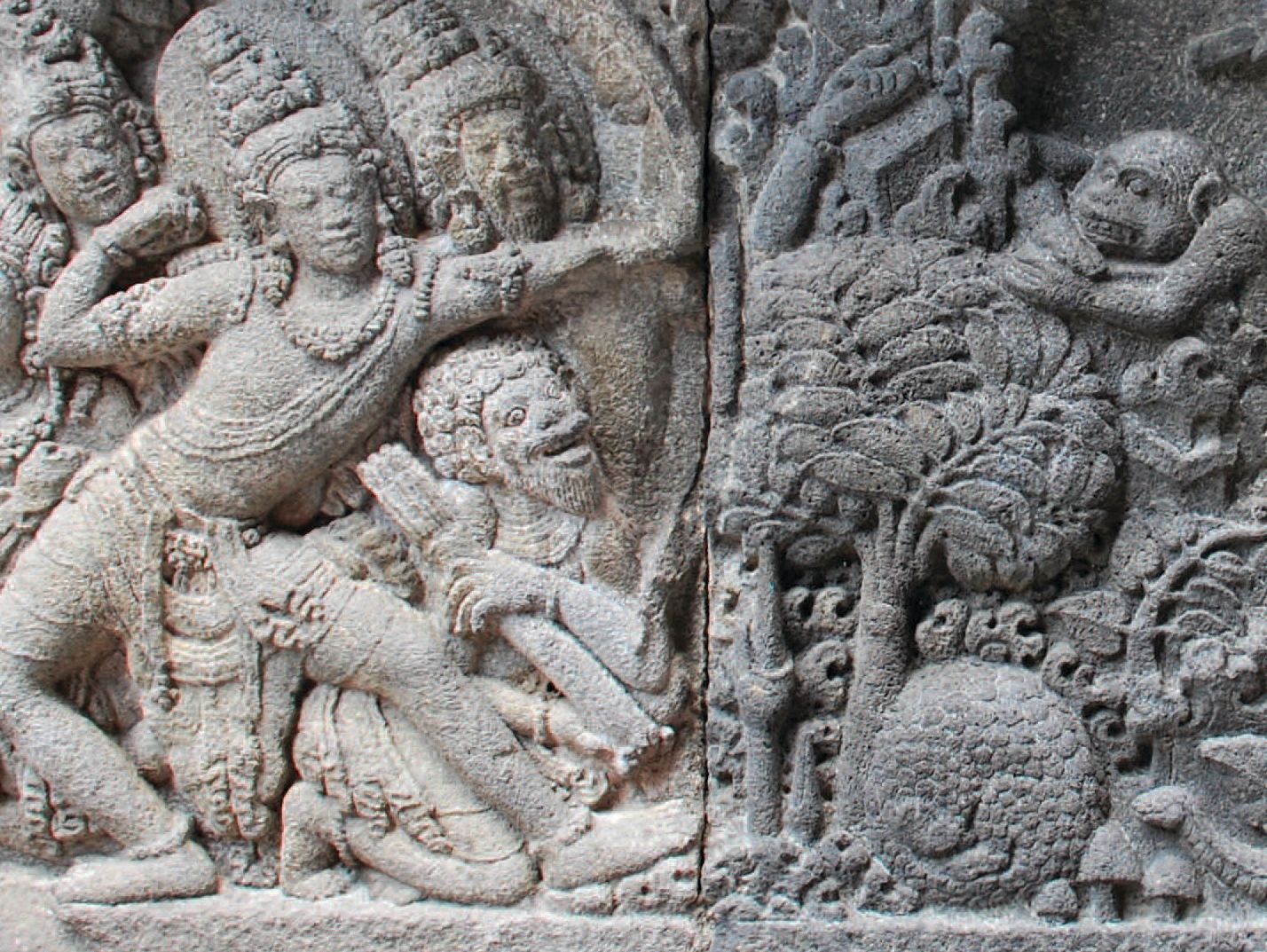
Caṇḍi Śiwa relief in the 9th-century Loro Jonggrang temple, Prambanan, Indonesia, showing a pangolin (bottom, to the right). Image courtesy of Véronique Degroot.
Caṇḍi Śiwa relief in the 9th-century Loro Jonggrang temple, Prambanan, Indonesia, showing a pangolin (bottom, to the right). Image courtesy of Véronique Degroot.
Oral riddles and exchanges used by the Väddā or Wanniyalaeto (literally ‘forest dwellers’) – a people group seen as the Aboriginal inhabitants of Sri Lanka – suggest that indigenous modes of naming are commensurate with early modern European natural historical classification.
Wanniyalaeto men smoked and dug pangolins out of their holes – the creature was an important source of protein. According to the anthropologists, Charles and Brenda Seligman in their book of 1911, this indigenous community called the pangolin ‘bagusa’, ‘eya’ and ‘kabelelewa.’
A 1924 Sinhala–English dictionary also gave the pangolin four distinct names: kaballavā (කබල්ලැවා), mulkodhu (මුල්කොදු), valdaranayā (වල්දරණයා) and ǣyā (ඈයා) denoting how the island’s inhabitants were struggling with the creatures’ various features in finding a name. One possibility is that the main name in Sinhala for pangolin, kaballavā combines two words, kabal (කබල්) for skull and ǣyā (ඈයා) for porcupine.
Though these elaborate naming practices align with the confusion of European natural historians, there is something quite distinct and troubling to a European sense of classification in an exchange presented by Gwladys Hughes Simon as a Wanniyalaeto lullaby:
Rocked little one, / Crying little one; / Get to sleep little one. / Roasted little one, / Pengolin, little one! / Sleep little one.
This blurs the relation between the two ‘little ones’, the child and the pangolin. To identify a pangolin with human progeny is a fundamental form of recognition, especially in a community that reveres ancestors. Meanwhile, the cyclicality of rocking and roasting which is part of this chant, allows alternative emotions connected to nurture and ingestion to become aligned.
Research after the pandemic
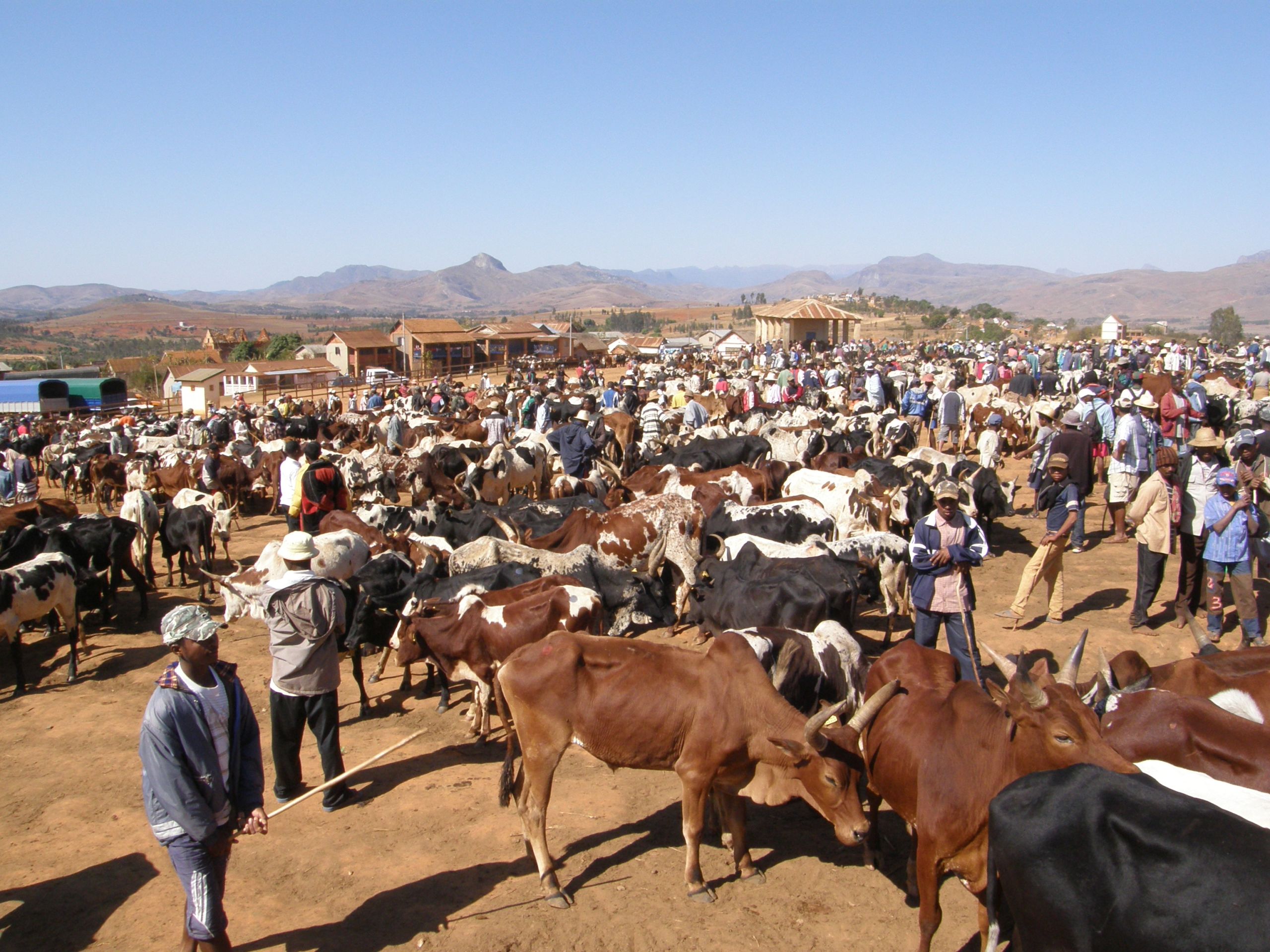
If the human-pangolin relationship was unstable and liable to oscillation between detachment and engagement, that relationship has now entered a new phase where pangolins are heavily exploited with little room to manoeuvre. This plight is certainly shared with many wild creatures with whom humans have not had sustained contact until now.
It is precisely from a context where there has been long-term instability in the human-animal relationship that zoonotic disease transfer is likely. This instability might include a sequence along these lines: little past contact accompanied by modes of evasion, ignorance, interest or confusion, giving way to heavy contact. That was what characterised the pangolin-human story.
Seeking to identify pangolins, or other animals, as the villains that caused a pandemic could spell disaster for their populations, but it also misses the point of our long shared history. Among the anthropogenic drivers of zoonotic disease transmission are human domestication of animals, human encroachment into habitats high in wildlife biodiversity and the hunting of wild animals.
Large-scale industrial farming is also a problem because it produces genetically similar populations across which disease can spread quickly. In this context, the relation between the animal, the human and disease deserves plotting over the long term. The human-pangolin history chartered here is a first step in this direction.
COVID-19 arises from the human-animal interface. The way ahead for historians as they collaborate with other scholars in the arts and sciences may not lie simply in decentring the human and centring the animal. The interlocking crises of the pandemic and of climate change call for a multi-species and even trans-species history that is about the role of various life forms and things as generative of historical change.
Reference: Sujit Sivasundaram, ‘The Human, the Animal and the Prehistory of COVID-19’, Past & Present (2020). DOI: 10.1093/pastj/gtaa024
Sujit Sivasundaram is Professor of World History at the University of Cambridge and Fellow of Gonville and Caius College. His latest book, Waves Across the South: A New History of Revolution and Empire, was published by William Collins on 20th August 2020.


